Tech Foresight 2039
Looking forward to future needs
by Ian Mundell
Technology foresight involves thinking forwards, perhaps 20 years or more into the future. For academics focused on present research, and wary about going beyond the available evidence, this may not come naturally.
“We push them to consider future possibilities, in a guided context, which we provide through our research,” explains Graciela Sáinz de la Fuente, Research Principal at Imperial Tech Foresight at Imperial College London.
“In this way, looking into the future does not just project the present, exponentially, but considers all the factors that may come into play.” This involves looking at how advances play out in various settings: social, technological, economic, environmental, political, and values. “We put each technology in this context to pull out its potential future implications.”
Building a context
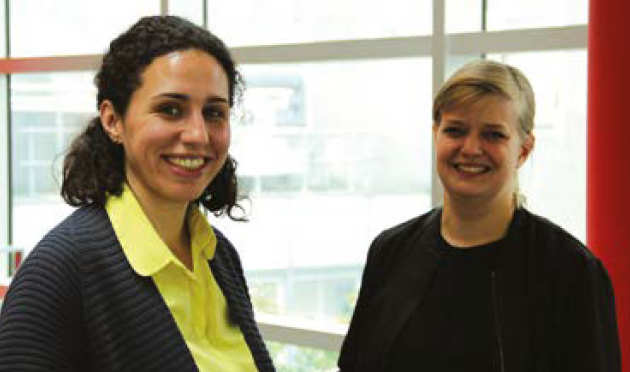 This foresight context is built from conversations with academics at Imperial, and a wider reading of the research literature. It is also informed by talking to businesses and other organisations with expertise in the development and use of technology.
This foresight context is built from conversations with academics at Imperial, and a wider reading of the research literature. It is also informed by talking to businesses and other organisations with expertise in the development and use of technology.
“We see this approach as a way to contextualise the research,” explains Maria Jeansson, Imperial Tech Foresight Strategy Manager. “If you identify ideas across the different settings that you haven't heard about before, you can start analysing what these might mean and why they might be happening now.”
These are often 'weak signals' – early indications that a new development might be on its way, or that a new trend might be emerging. Early insight into these movements could say something about a wider adoption of the technology and how it might be received. “Weak signals are indicators of something that might grow, that might be impactful in the future,” says Jeansson.
The results of Imperial Tech Foresight’s work include bespoke foresight workshops, consultancy services, and an annual flagship event. This year's event, Tech Foresight 2039, will explore technology's impact on the physical, emotional and safety needs of human experience, an impact often overlooked when assessing how disruptive a technology might be.
“We wanted this theme to reflect a 'real' future context for technology, by showcasing more broadly than before how technology has influenced our needs as humans and how it might affect our future needs,” says Jeansson.
Design for good mental health
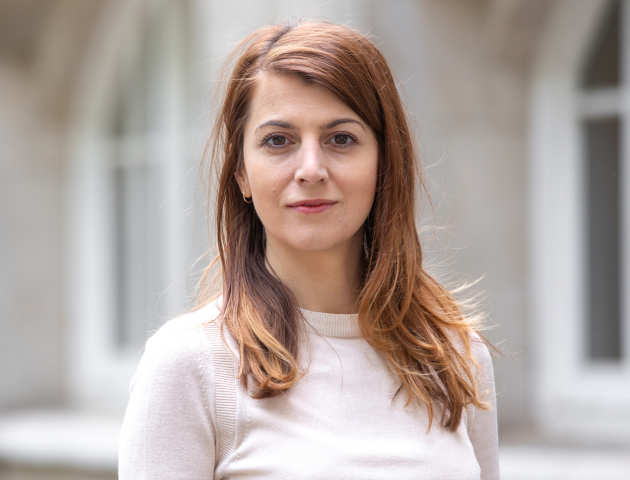 Thinking about technology's impact on our emotional needs suggests a greater contribution from psychology and the behavioural sciences. This is something Dr Nejra Van Zalk wants to explore in her Design Psychology Laboratory, part of the Dyson School of Design Engineering.
Thinking about technology's impact on our emotional needs suggests a greater contribution from psychology and the behavioural sciences. This is something Dr Nejra Van Zalk wants to explore in her Design Psychology Laboratory, part of the Dyson School of Design Engineering.
“The work I want to do there is about how we design products and services that will be conducive to people's better mental health,” she says. “This tends to be disregarded at present. Designers focus too much on the product and too little on the people who will be using it.”
This is particularly important with digital products, which have enormous potential to shape our behaviour. “Facebook is a great example. Here we have something that is perfectly designed in the sense that it is very addictive, but it's only years later that we are starting to ask what using it does to people.”
Companies with digital products such as games will have to address their psychological impact if they hope to have a sustainable business. “This will mean working with behavioural scientists to bake in elements that counteract addictive aspects of a game, for example at the end of a session, or by limiting how long someone can play.”
This presents a challenge, since design features with a psychological impact require testing over an extended period of time. But it is feasible, as long as mental health is considered early enough in the design process. “Design is an iterative process, and you can also include iterations that test how people react to a product or service, and how it affects their mental health and wellbeing.”
This is something a PhD student in Dr Van Zalk's group is doing with an exposure therapy system for people who stutter. “He's designing a virtual reality environment for them, so he will be testing levels of social anxiety and its effect on stuttering, while monitoring other aspects of how using the system makes people feel.”
In the longer term, Dr Van Zalk predicts a shift in attitudes to digital devices. “We want to create a society where we can all feel well, but still use digital products. So we have to think about measures that will help people help themselves and become more autonomous.”
Meanwhile, Dr Van Zalk is leading a new Human Behaviour and Experience (HuBEx) network at Imperial, which brings together researchers across the College to work on behavioural and human-centred issues associated with large-scale societal problems. These range from issues in health and sustainability, to civic engagement, consumer finance, and digital economies.
“Human behaviour and experience are necessary factors in much of the research that takes place here,” she says. “This might concern, for example, understanding patients’ behaviour and decision-making when they don't adhere to their medication, or human emotional processing within human-robot interactions. The HuBEx network aims to bring together scholars from a wide range of disciplines whose research can help to address such challenges.”
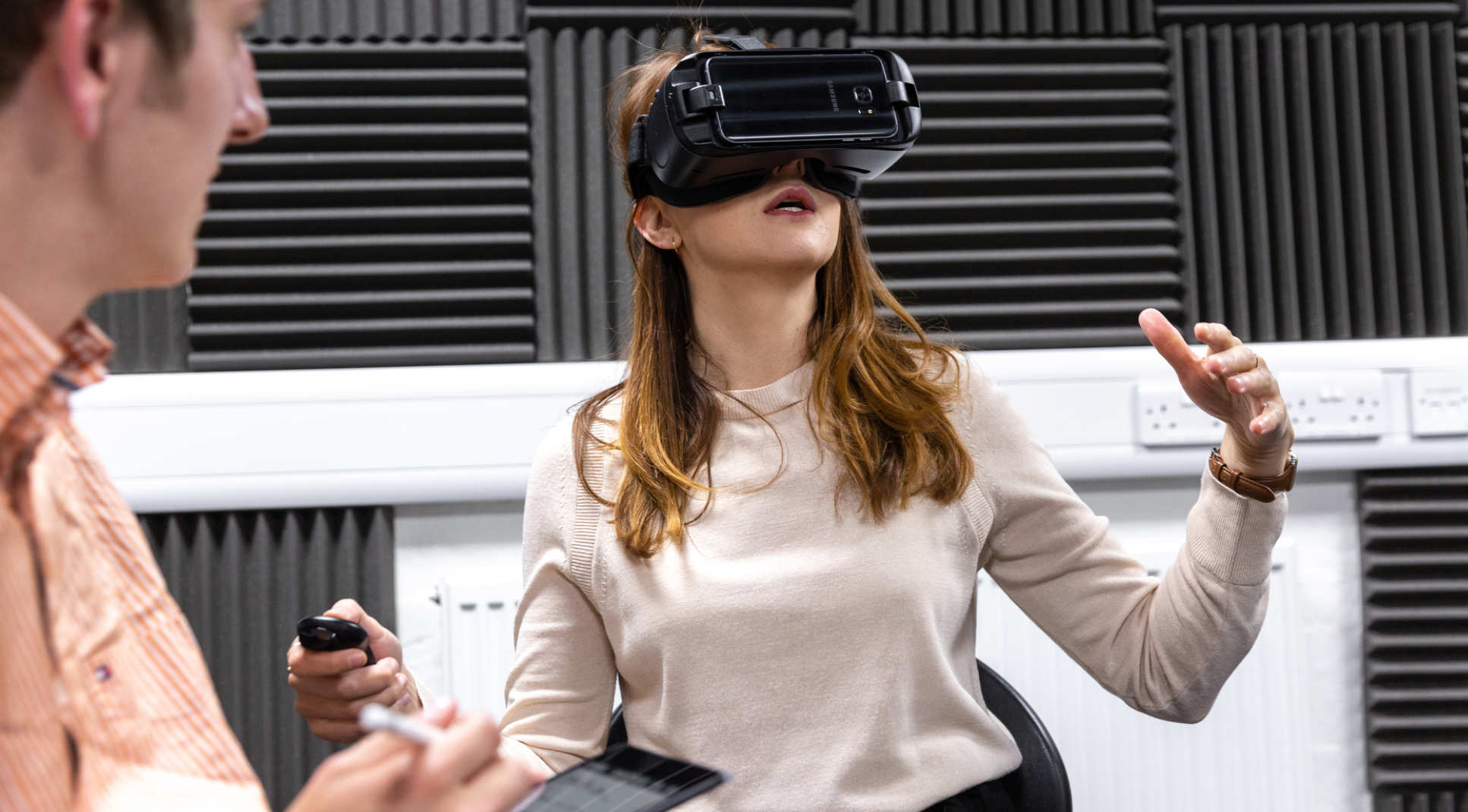
Sleep and healthy ageing
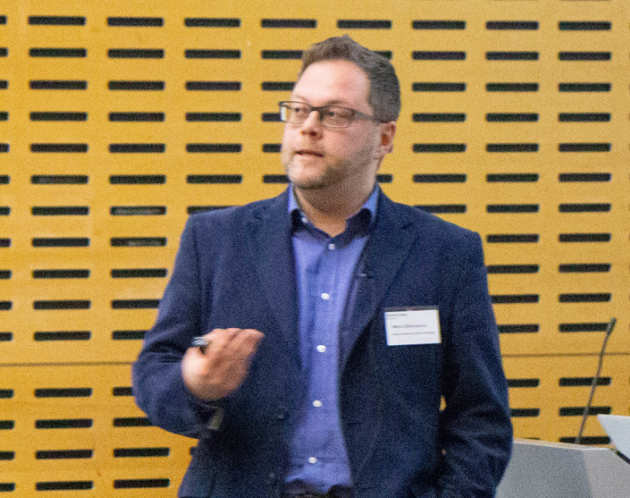 The connection between body and brain is another fertile area for research. Dr Marco Brancaccio, in the Department of Medicine, has been looking at disruption in the body clock that appear to be associated with the early stages of dementias such as Alzheimer's disease.
The connection between body and brain is another fertile area for research. Dr Marco Brancaccio, in the Department of Medicine, has been looking at disruption in the body clock that appear to be associated with the early stages of dementias such as Alzheimer's disease.
“Well before they develop any cognitive symptoms, people developing dementia have less robust circadian rhythms and sleep worse than people that are ageing healthily,” he explains. “So this is not just ageing, but something that seem specifically related to malfunctioning of the brain.”
His research involves trying to understand why this change is happening, and how it might inform the management of dementia. One possibility is that checking the circadian rhythm might help identify people at risk of developing dementia, and so allow early or preventative treatments. Another is that restoring a normal circadian rhythm might itself have a preventative effect, or significantly delay onset of the disease.
Since there would be an understandable reluctance to interfere with the neurons in the brain simply to adjust someone's body clock, Dr Brancaccio is exploring alternative approaches. One is to target the glial cells, helper cells which are thought to support the various functions of the neurons.
“The glial cells may be more amenable to interventions,” he explains. “They are less critical to brain function and more flexible.” And initial pre-clinical research has been promising. “If you target a specific sub-population of glia in the master clock, this is sufficient to restore circadian function.”
Diagnosis gets under your skin
Following the biological changes going on inside a body usually means taking something out for testing – such as blood or urine – or getting a mechanical sensor in. Both approaches can be uncomfortable or associated with poor patient compliance, and involve a good deal of high-cost analytical hardware. A much more innovative approach is being developed by Dr Ali Yetisen, in the Department of Chemical Engineering.
He proposes creating diagnostic tattoos, in which fluid sensors are injected into the skin. These sensors would then react to chemical changes in the fluid between the body's cells by changing colour. These changes could then be seen on the surface of the skin.
“We can read these tattoo sensors using a smartphone camera,” Dr Yetisen explains, “and an app on the phone then converts the colorimetric information into concentration values.” This information can either be analysed by the app itself, or sent to a health centre or the person's family doctor.
The main challenge in designing these systems is developing reversible biosensors. “pH sensors can be reversible, but the current glucose and protein sensors only work once. We are working on new kinds of sensors that will enable us to have continual monitoring.”
Diabetes is one condition where diagnostic tattoos would represent an advance. “There is a clear benefit for patients in having a continuous monitoring system integrated in their bodies, as opposed to taking blood samples from finger pricks up to three times a day,” Dr Yetisen says. This technology could also be used to monitor levels of therapeutic substances in the body. “Pharmaceutical and biotech companies are interested in developing companion diagnostic technologies that can help them personalise the dose of medication given to a patient.”
Other applications may include tracking levels of cortisol and other hormones in professional athletes, or monitoring electrolyte concentrations as an indicator of osteoporosis in astronauts spending long periods in zero gravity.
Diagnostic tattoos could also appeal to people in the 'quantified self' movement, complementing devices such as wearable fitness trackers by indicating body function such as dehydration status, exposure to UV light, or even stress levels.
Building a robotic patient
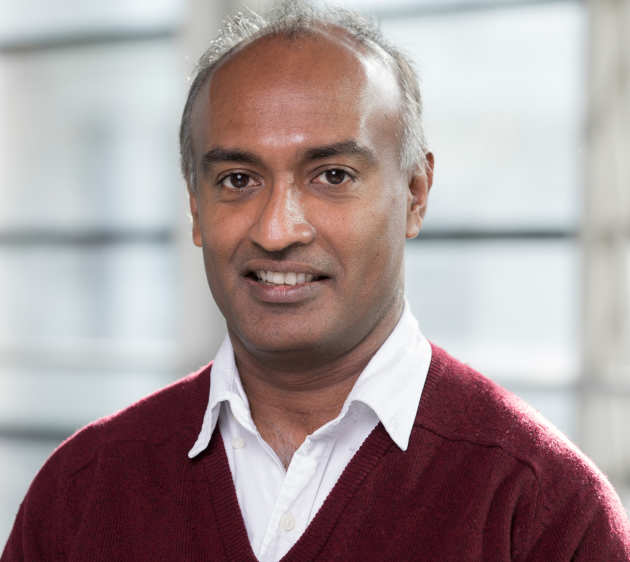 Dr Thrishantha Nanayakkara, from the Dyson School of Design Engineering, is interested in a more traditional form of diagnosis: the way a doctor feels a patient's abdomen to assess the health of the organs within. While apparently simple, the touch involved is a remarkably sophisticated tool.
Dr Thrishantha Nanayakkara, from the Dyson School of Design Engineering, is interested in a more traditional form of diagnosis: the way a doctor feels a patient's abdomen to assess the health of the organs within. While apparently simple, the touch involved is a remarkably sophisticated tool.
“Your fingers are not just passive sensors,” he explains. “Your perception depends on how you press, how you control the stiffness of your fingers, how you move them and stimulate the tissue.”
Teaching new doctors how to do this is an important part of medical education, but the opportunities to learn by practicing on patients are diminishing. Hospital stays are becoming shorter, and people simply don't like being handled by long lines of medical students.
So Dr Nanayakkara and his colleagues are developing a robot patient, an artificial abdomen that presents the organs in their healthy state, and as they feel when affected by various diseases. This allows trainers to demonstrate touch diagnosis to students, and the students to practice, their performance recorded by sensors inside the robot. “By the time they see a real patient, they will already be well-trained.”
Part of the research underpinning the robot patient has involved developing materials and moving parts that can realistically reproduce – and vary – the shape and texture of living organs. This has been informed, in part, by studying how soft-bodied animals, such as the octopus, change shape and exert force.
The device is being developed in collaboration with Professor Simon Lusignan, who is a Director of the Royal College of General Practice Research and Surveillance Centre. This collaboration has been instrumental in testing prototypes and helping the Imperial researchers to learn more about the diagnostic process. It soon became clear, for instance, that reproducing the architecture of the abdomen was very important.
“Doctors work with very subtle landmarks to navigate the abdominal space,” Dr Nanayakkara says. The robot also has to be the right temperature. “They don't want to be in that uncanny valley where something feels like a living organ, except that it is cold and dead.”
A longer term goal is to use the robots to support remote diagnosis. A patient at home could put on a jacket fitted with sensors, which would then send data to a robot in the doctor's surgery for an initial diagnosis. Collecting a patient's data over time would add another dimension. “A doctor could upload my data to the robot and feel months or years of my medical history within a few minutes.”
Safe and reliable systems
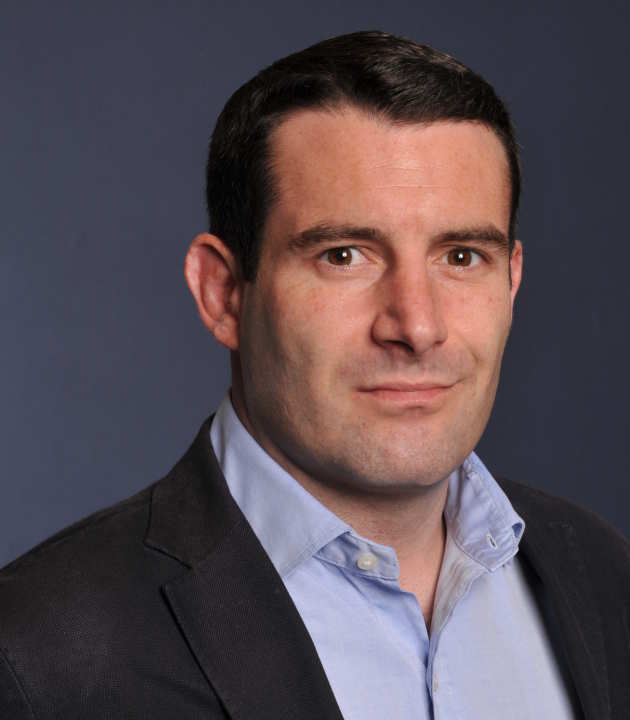 Thinking into the future also means ensuring that innovative systems designed today continue to function reliably for years or even decades ahead. This is an issue Dr David Boyle, also from the Dyson School of Design Engineering, is working on with respect to embedded computer systems. These are increasingly involved in transportation, communications or utility networks, and everything under the popular banner of the Internet of Things.
Thinking into the future also means ensuring that innovative systems designed today continue to function reliably for years or even decades ahead. This is an issue Dr David Boyle, also from the Dyson School of Design Engineering, is working on with respect to embedded computer systems. These are increasingly involved in transportation, communications or utility networks, and everything under the popular banner of the Internet of Things.
“Rather than sleepwalking into a future where we are reliant on systems that we don't understand, or that were deployed in haste and may not be fit for purpose, we need to ask how we can we design in a level of trustworthiness and reliability from the outset.”
This can be challenging because of the lack of information about how embedded computers perform 'in the wild'. “Often we don't have the opportunity to study a technology once it is deployed, to figure out what the real-world problems are, or indeed get an understanding of how they might fail over time.”
For example, a system that relies on wireless communication will have to cope with interrupted or imperfect connections. “Its reliability and repeatability will not be exactly the same every time, but nevertheless we have certain safety constraints that we will have to satisfy.”
Embedded computer systems may also need to operate autonomously for many years or even decades, if they are built into a structure such as a bridge. “There are very few examples in contemporary electronics of systems that have been running in the wild for 10 or 20 years.”
Initially the big problem was energy, and limited or declining battery performance. “We are overcoming those problems through energy harvesting, higher energy density cells, lower power electronics and so on,” Dr Boyle says “Then the next problem may become the microchips, the sensors or the security protocols.”
“In many cases we just don't know,” Dr Boyle concedes. A chip, for example, is just one component in a more complex microsystem, which in turn is part of a system of microsystems. This extends to systems of systems. The complexity becomes immense. “Overcoming these often invisible challenges will keep us quite busy for the next 20 years.”
Credible questions about the future
The important thing in projecting all of these technologies into the future is the resulting discussion, rather than coming to firm conclusions. “It's about posing credible questions about the future from a variety of perspectives,” says Jeansson. “We never say: this is the future. Rather, it might be one of the futures.” It is also important that these futures are flexible. “Sometimes we see speculative futures where things are too crisp, clean and complete, and it's hard for people to say where they can put their stamp,” she goes on. “We want to have an openness for people to play with these futures and add their perspective to them.”
That includes people from the business community. “Often academics don't really speak the language of business and it can be difficult to merge those different worlds, so we act as an intermediary,” says Sáinz de la Fuente. “Ultimately, we want to tell businesses about the amazing research that is being done at Imperial, and how that research could be used.”
Tech Foresight 2039
09.00–16.00,
Thursday 27 June 2019
Royal Institute of British Architects, London W1B 1AD
Join world-class Imperial academics at this conference to explore technology’s impact on the physical, emotional and safety needs of human experience. Discover what might be next on the technology horizon to help future-proof your business.
Ian Mundell is a journalist who specialises in research and higher education. He divides his time between London and Brussels.
Tech Foresight 2039 is curated by Imperial Tech Foresight, which enables business leaders to immerse themselves in the fringes of disruption, explore breakthrough technology and research through visionary academic perspectives, and connect with challenging, proactive and engaging visions of the future. Imperial Tech Foresight can help your business navigate the rapidly shifting technology landscape, enabling you to make better decisions on the future of your organisation.
The conference is powered by the Imperial Business Partners programme, which enables a unique approach to problem solving for research-driven industries, by providing accelerated access to Imperial expertise, talent and facilities. Members benefit from a range of specialist services, and enjoy a programme that combines academic excellence with entrepreneurial innovation to generate powerful debates and inspirational discussions.


